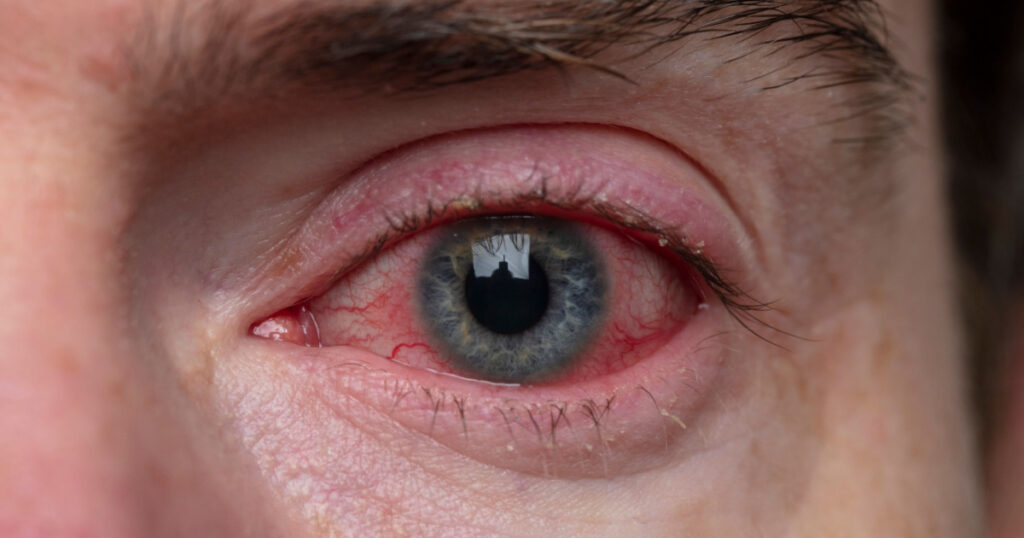Crohn’s disease is a chronic condition that falls under the category of inflammatory bowel disease (IBD). It’s an autoimmune-mediated inflammatory condition that can affect any section of the digestive system. Many people assume that Crohn’s symptoms only affect the gut, but this is not the case. This condition can also affect the eyes, joints, bones, kidneys, liver, and skin.
What is Crohn’s Disease?

As of now, there are five types of Crohn’s disease. The most common type is ileocolitis, affecting the end of the intestines or the colon. Meanwhile, Crohn’s granulomatous colitis only affects the colon. Ileitis only affects the small intestine. Gastroduodenal Crohn’s disease affects the stomach and the start of the small intestine. Meanwhile, jejunoileitis causes inflammation to appear in patches in the upper section of the small intestine.
Because the disease can appear in different areas with different severities, the symptoms vary from case to case. They tend to include fatigue, pain, ulcers in the gut or mouth, diarrhea, anemia, weight loss, appetite loss, rectal bleeding, and fissures. However, symptoms can also spread away from the digestive system and negatively impact other parts of the body. [1]
Read: 20 Symptoms of Lyme Disease You Can’t Afford to Ignore
Less Known Symptoms of Crohn’s Disease
Arthritis

Inflammation in the joints is one of the most common extra-intestinal manifestations for people with IBD. Fortunately, arthritis from Crohn’s usually improves alongside intestinal symptoms. Chronic arthritis, independent of active disease, is much more difficult to help. While arthritis typically appears in larger joints like the elbows, wrists, and knees, people with Crohn’s could experience arthritis anywhere.
Osteoporosis

“People with Crohn’s disease are at higher risk for osteoporosis than the general population is,” says Mariam Fayek, MD, attending physician at Women and Infants Hospital Center for Women’s Gastrointestinal Health in Rhode Island. “The chronic inflammation of Crohn’s disease leads to increased bone loss, and people with Crohn’s are also more likely to be vitamin D deficient, both of which contribute to osteoporosis risk.” [2]
Crohn’s can hurt the bowel that absorbs vitamin D, resulting in a deficiency. Additionally, people who took steroids are more likely to have thinner bones as a result. Unfortunately, steroids were a common treatment before the 1990s so people who had used this medication are very likely to have osteoporosis. It’s advisable for people with Crohn’s to have regular tests for bone density and vitamin D levels.
Read: More symptoms than you think may be associated with your migraines
Skin conditions

Crohn’s symptoms can lead to several skin conditions like erythema nodosum and pyoderma gangrenosum. Erythema nodosum comes in the form of red nodules on the legs, and pyoderma gangrenosum look like large ulcers that also tend to appear on the legs. Crohn’s can also cause psoriasis, another inflammatory disease that appears as discolored skin areas. It’s also linked to psoriatic arthritis, an inflammatory disease in the joints.
Fatigue

There are many reasons why fatigue occurs alongside this illness. One reason is attributed to the inflammatory nature of the disease. It can also result from vitamin deficiency or malnutrition because of the body’s poor ability to absorb nutrients. “People with Crohn’s disease can become anemic and experience fatigue because of blood loss and inflammation,” Fayek says. “Fatigue can also be associated with depression, which is common in people with chronic conditions such as Crohn’s disease.”
Read: Fibromyalgia Linked To Nearly 20 Different Kinds Of Gut Bacteria
Mouth sores

It’s fairly common for people with Crohn’s to develop sores, either as a reaction to a medication or as an early sign of mouth ulcers. The most prevalent type of mouth ulcer is known as canker sores, and they can last for a week or two. A minority of Crohn’s patients can get aphthous ulcers, which are larger and can take several weeks to heal.
Another sore can come in the form of mucogingivitis, which involves inflamed gums, and cobblestoning, which involves swollen bumps on the inside of the cheeks. All of these mouth sores can be painful and make eating difficult. Usually, managing Crohn’s properly can help prevent and treat these symptoms, but severe cases might call for immunosuppressants and topical steroids. [3]
Eye infections

In rare cases, Crohn’s can result in two types of eye conditions, both medical emergencies. The first is called episcleritis and causes inflammation, irritation, and redness in the eye’s white area. The second type is called uveitis, which causes inflammation in the middle layer of tissue in the eye. This results in symptoms like light sensitivity, blurred vision, and sudden redness.
Even though it’s uncommon to experience these conditions, people with Crohn’s should be in touch with immediate healthcare if they experience any redness or pain in the eye. Additionally, episcleritis may improve as digestive symptoms improve, but uveitis needs to be treated on its own.
Treatment for Crohn’s Disease

As of now, there is no cure for Crohn’s disease. Treatment can involve surgery, medication, and supplements. The goal is to control the inflammation, relieve symptoms, and ease the severity and frequency of flare-ups. Treatment plans depend on the type of Crohn’s, its severity, its complications, and how the body reacted to previous treatments. For instance, people with severe complications may need to see additional specialists to examine their joints, eyes, etc. When successful, people can go for long periods of time between flares without any symptoms. [4]
Keep Reading: Leaky Gut: What is it? Is it real? And 11 Common Symptoms to Look Out For
Sources
- “All you need to know about Crohn’s disease.” Medical News Today. Yvette Brazier. January 4, 2023
- “8 Symptoms of Crohn’s Disease That Don’t Affect Digestion.” Everyday Health. Elizabeth Shimer Bowers. March 21, 2023
- “6 Surprising Ways Crohn’s Disease Affects Your Body.” Healthline. Jessica DiGiacinto and Shane Murphy. July 29, 2021
- “Body of Symptoms: IBD Affects More Than Your Gut.” WebMD. Minesh Khatri, MD. May 19, 2022

